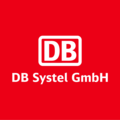

Greatly reducing the workload using performance support
700,000 calls and 100,000 emails every year
The Helpdesk works with complex instructions. Explanations and instructions are extensive and often extend over many pages of text. The assistance is lengthy and can only be provided by technically well-trained support staff. In this design and form, the documentation is not usable for the end user himself and thus stands in the way of the desire to relieve the support staff.
This problem becomes even more apparent with new releases or the introduction of new IT applications: the helpdesk is often not involved in the documentation of new applications and the training for them, the stored instructions are outdated and therefore cannot be used in a meaningful way.
Strategy for relieving the helpdesk
Together, DB Systel and tts developed a strategy: when it comes to release changes and new implementations, the helpdesk now intervenes much earlier and prepares the end users for changes in advance. With Producer, the integrated authoring tool of the tts performance suite, this can now be done much faster.
After go-live - during operation - the context sensitivity of QuickAccess in the tts performance suite should result in users having concrete answers to concrete questions within seconds, precisely tailored to the application context and their function.

I am convinced that the tts performance suite is an important building block for us on the way from the classic helpdesk to a partner for knowledge management. Reaching for the handset is being replaced by "clicking on the orange". I am optimistic that with QuickAccess we will create great acceptance among users and thus move from cost-intensive telephony to self-service.

Agilisation in the Deutsche Bahn Group
Over 100,000 IT users in the Deutsche Bahn Group receive support from DB Systel for 600 applications – 80 per-cent from the cloud. In the past, this was done via three channels:
- An IT community,
- A self-service portal with a search function, and
- The help desk.
Most users prefer to pick up the phone or send an email, generating 700,000 calls and 100,000 emails every year – and the figures are rising. The help desk works with complex instructions. Explanations and manuals are thorough, often filling pages upon pages with text. Providing assistance takes time, and only specially qualified support staff are cut out for the job. End users, however, are unable to make use of such documents. This presents an obstacle to providing the relief the support staff long for and becomes all the more evident whenever there’s a new release or a new IT application is launched.
This problem becomes even more apparent with new releases or the introduction of new IT applications: the helpdesk is often not involved in the documentation of new applications and the training for them, the stored instructions are outdated and therefore cannot be used in a meaningful way.
A few years ago, the DB Systel help desk could still expect to handle just one or two releases each year, but the Deutsche Bahn Group’s agile approach is starting to come into full swing. In 2018, the Group gradually began to transfer its IT applications into the cloud, where software is increasingly being developed using agile methods (scrum). Development cycles are getting shorter, with most new features now available after just two to four weeks. With a nod to the railway company, Head of User Services Norbert Herold describes how these trends affect support operations: “Nowadays, features need to be provided to the user while the wheels go on turning.” It was clear that the help desk in its former state would be unable to meet the requirements of an increasingly agile application landscape with short development cycles and quicker access to releases. Together with tts, a concept was devised to make it fit for the digital and agile future.
Goal: Halving help desk calls
DB Systel had set itself an ambitious goal. In order to reduce costs, the idea was to cut the help desk’s workload in half by offering an “employee selfservice”. Rising to this Herculean challenge was only possible under two conditions. Firstly, the new solution had to be more attractive to users than a quick call to the help desk. Secondly, the DB Systel experts needed to be able to methodically document their extensive knowledge so that users could find it and quickly put it to use.
From a traditional help desk to a knowledge management partner with tts performance suite
DB Systel and tts decided to codevise a strategy to fulfill these conditions. Thanks to their efforts, the help desk now steps in much faster every time new releases or applications are launched, preparing end users for any changes well in advance. Using tt knowledge force, the authoring tool in tts performance suite, staff can now do their job much more quickly. The authoring tool’s user interface is modeled on MS Office and enables users to create step-by-step guides and e-learning content in one go, with just a few clicks.
Once up and running, the context sensitive QuickAccess module inside tts performance suite is designed to provide clear answers to users’ specific questions in a matter of seconds – all geared exactly toward the relevant application and its function. DB Systel and tts modified QuickAccess to also contextualize the DB Systel IT community’s content. The partners are working hard to provide access to all the stored knowledge via QuickAccess as users’ single point of entry.
What’s the next step?
Besides no longer having to deal with the same queries time and again, help desk employees can look forward to an entirely new outlook. Following the introduction of tts performance suite, these former call agents are evolving into true “knowledge managers”. DB Systel believes there is further potential to be leveraged, one of the next steps being to update end users of any faults that arise by sending push notifications via QuickAccess.
See for yourself and schedule a demo appointment. Our team will be happy to show you how to take advantage of the tts performance suite for your business. Simply fill out the form and we will get in touch with you as soon as possible.



